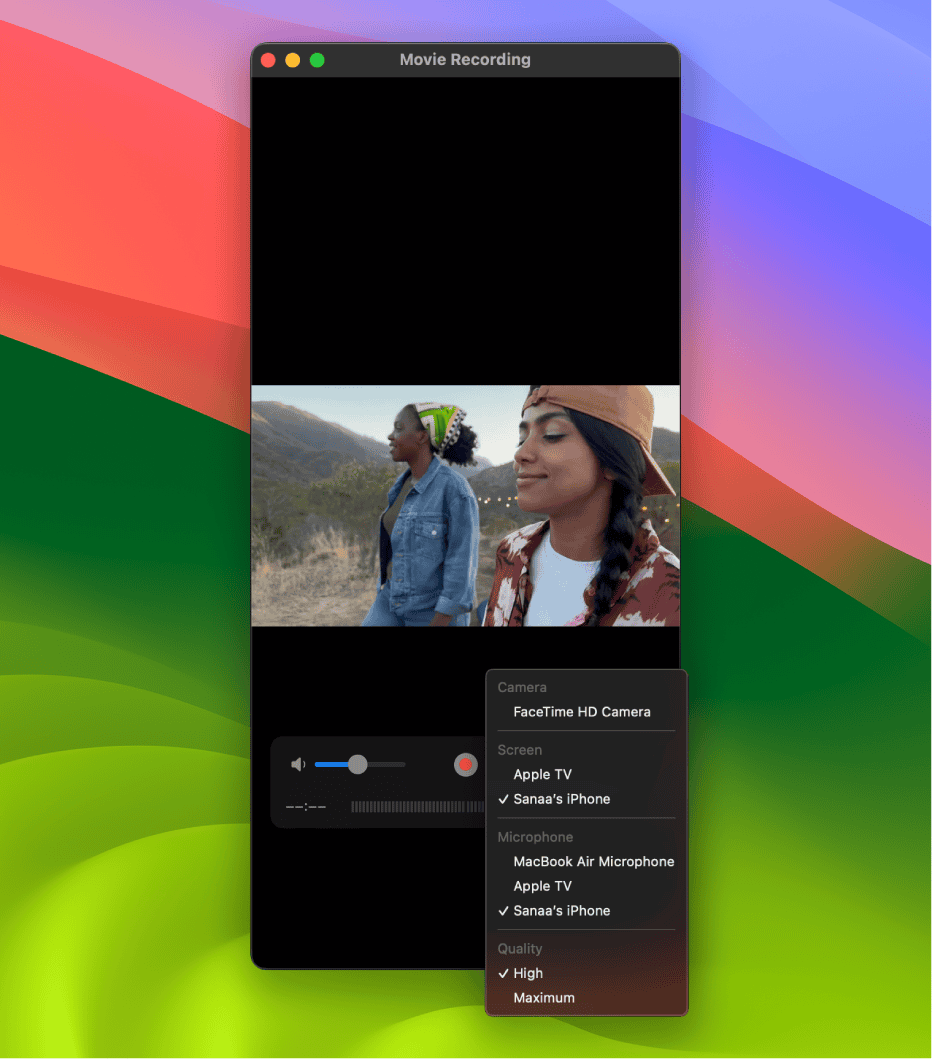QuickTime Pro 7.0 is a powerful media player and editor from Apple. It lets you play, edit, and create high-quality video and audio files on your computer. This tool supports many file types like H.264, MPEG-4, and Motion JPEG.
You can do more than just watch videos with QuickTime Pro 7.0. It has features to record audio, edit video clips, and even make your own movies. The software is easy to use, with a simple interface that helps you get things done fast.
While QuickTime Pro 7.0 is no longer sold by Apple, it still works on older systems. If you have a valid license, you can download it for Windows or Mac OS X. Keep in mind that newer options exist for playing media files on current systems.
| Feature | QuickTime Pro 7.0 |
|---|---|
| Video Playback | Yes |
| Audio Recording | Yes |
| Video Editing | Basic |
| File Format Support | H.264, MPEG-4, Motion JPEG |
| Current Availability | Limited |
QuickTime Pro 7.0: A Blast from the Past
QuickTime Pro 7.0 was a significant upgrade to Apple’s media player when it launched in 2005. While it’s been superseded by newer technologies, it offered some key features that made it a valuable tool for Mac users at the time.
Here’s a look back at some of its essential features and upgrades:
Key Features
- Enhanced MPEG-4 Support: QuickTime Pro 7.0 offered improved compliance with the MPEG-4 standard, enabling better playback and editing of MPEG-4 files.
- H.264/MPEG-4 AVC Codec: This version introduced support for the H.264 codec (also known as MPEG-4 AVC), a more efficient video compression standard that offered higher quality at smaller file sizes.
- Core Audio Integration: QuickTime Pro 7.0 integrated with Core Audio, Apple’s low-latency audio API, allowing for high-quality sound and replacing the older Sound Manager.
- Core Image Filters: Users could apply Core Image filters to live video, enabling real-time visual effects.
- Quartz Composer Support: QuickTime 7.0 added support for Quartz Composer (.qtz) animations, allowing for the integration of motion graphics.
Upgrades from Previous Versions
- Improved Performance: QuickTime Pro 7.0 boasted improved overall performance and stability compared to earlier versions.
- Updated Interface: The user interface was refined for a more streamlined experience.
- Export Presets: It included presets for exporting video to popular Apple devices like the iPod, Apple TV, and the then-new iPhone.
- Editing Capabilities: QuickTime Pro 7.0 allowed users to edit clips, merge audio and video tracks, and even add annotations to videos.
Why is QuickTime Pro 7.0 Still Relevant?
While QuickTime Pro 7.0 is no longer sold or supported by Apple, some users still find it useful for specific reasons:
- Legacy Compatibility: It can play older media formats that might not be supported by newer players.
- Specific Features: Some users prefer its editing features or workflow for certain tasks.
- 32-bit Compatibility: It remains one of the few media players that can run on older 32-bit Mac systems.
Where to Find QuickTime Pro 7.0
If you need QuickTime Pro 7.0 for a specific purpose, you might be able to find it through these methods:
- Old Backups: If you previously purchased QuickTime Pro 7.0, you might have an old installer on a backup drive or disc.
- Internet Archives: Websites like the Internet Archive might have copies of the installer available.
- Second-hand Resellers: Some online platforms that sell older software might have QuickTime Pro 7.0 available.
Important Note: Be cautious when downloading older software from unofficial sources. Ensure the source is reputable to avoid potential security risks.
Modern Alternatives to QuickTime Pro 7.0
While QuickTime Pro 7.0 had its time, there are now more modern and powerful alternatives available:
- QuickTime Player (version 10 and later): The built-in QuickTime Player on macOS still offers basic media playback and some editing features.
- iMovie: Apple’s iMovie is a free video editing application with a user-friendly interface and more advanced features.
- Final Cut Pro: For professional video editing, Final Cut Pro is a powerful application with a wide range of tools and capabilities.
- VLC Media Player: VLC is a versatile, open-source media player that supports a wide range of formats.
- Other Third-Party Options: Numerous other media players and video editing applications are available for macOS, each with its own strengths and features.
Overview of QuickTime Pro 7
QuickTime Pro 7 enhanced Apple’s multimedia platform with advanced features for video editing and content creation. It offered powerful tools for both Mac and Windows users.
History and Evolution
QuickTime Pro 7 launched in 2005 as a paid upgrade to Apple’s free QuickTime player. It built on the success of earlier versions by adding support for H.264 video, a codec that became crucial for high-quality video compression.
The software was compatible with both PowerPC and Intel-based Macs running Mac OS X v10.5 (Leopard). For Windows users, it supported Windows XP and Vista operating systems.
QuickTime Pro 7 remained relevant for years due to its robust feature set. Many professionals continued using it even after Apple introduced QuickTime X in 2009.
Key Features
QuickTime Pro 7 offered several advanced capabilities:
- Full-screen video playback
- Basic video editing (cut, copy, paste)
- Audio and video recording
- Movie sharing and export options
- Support for various video formats
One standout feature was its ability to record podcasts using a USB microphone. This made it a popular choice for content creators.
The software also allowed users to convert between different file formats. This flexibility was useful for both casual users and professionals.
System Requirements
| Operating System | Minimum Processor | Minimum RAM |
|---|---|---|
| Mac OS X 10.5 | PowerPC G4/G5 | 256 MB |
| Windows XP/Vista | Pentium 3 | 128 MB |
QuickTime Pro 7 had modest system requirements. On Mac, it needed at least a PowerPC G4 or G5 processor and 256 MB of RAM. For Windows users, a Pentium 3 processor and 128 MB of RAM sufficed.
The software required about 50 MB of free disk space for installation. An internet connection was necessary for online features and updates.
QuickTime Pro 7 supported various video cards and sound cards. However, better hardware typically resulted in improved performance, especially when working with high-definition video.
Downloading and Installing
QuickTime Pro 7.0 installation varies between Mac and Windows systems. The process involves downloading the correct installer and following platform-specific steps.
For Mac Users
Mac users can download QuickTime 7 Pro from the Apple Support website. The installer is compatible with older Mac OS X versions. Here’s how to install:
- Download the QuickTime installer
- Open the downloaded file
- Follow on-screen instructions
- Enter your Pro registration code when prompted
QuickTime 7 Pro is not supported on newer macOS versions. For recent Macs, the built-in QuickTime Player offers similar features.
For Windows Users
Windows users need to download QuickTime 7.7.9, the last version for Windows. Follow these steps:
- Download QuickTimeInstaller.exe
- Run the installer
- Choose installation type (Typical recommended)
- Follow prompts to complete setup
QuickTime 7.7.9 works on Windows 7 and later. Older Windows versions may require an earlier QuickTime release.
| OS | Latest Compatible Version |
|---|---|
| Mac OS X | QuickTime 7 Pro |
| Windows 7+ | QuickTime 7.7.9 |
| Older Windows | QuickTime 7.0.3 |
Remember to uninstall older QuickTime versions before installing the new one to avoid conflicts.
Supported Formats and Usage
QuickTime Pro 7.0 supports a wide range of video and audio formats. It offers versatile compatibility and various use cases for media professionals and enthusiasts.
Video and Audio Formats
QuickTime Pro 7.0 supports numerous video and audio formats. For video, it handles MOV, AVI, and MPEG-4. Audio formats include AAC, AIFF, and WAV.
The software allows you to convert movies to different formats for viewing on mobile devices or sharing via email. This feature proves useful for content creators and media professionals.
Here’s a quick reference table of supported formats:
| Video Formats | Audio Formats |
|---|---|
| MOV | AAC |
| AVI | AIFF |
| MPEG-4 | WAV |
| 3GPP | MP3 |
QuickTime Pro 7.0 also enables you to edit movies and add new soundtracks. These capabilities make it a versatile tool for basic video and audio editing tasks.
Compatibility and Use Cases
QuickTime Pro 7.0’s format support extends its usefulness across various platforms and devices. You can use it to prepare content for iPods, mobile phones, and web sharing.
The software’s compatibility with popular formats makes it valuable for media playback and basic editing. However, it’s worth noting that QuickTime 7 for Windows is no longer supported by Apple.
For Windows users, newer operating systems include support for key media formats like H.264 and AAC. Current web browsers can handle video playback without needing additional plugins.
If you’re using an older system or working with specific file types, QuickTime Pro 7.0 might still be useful. But for most modern media tasks, you may find better alternatives in current software and built-in system capabilities.
Troubleshooting and Updates
QuickTime Pro 7.0 users may encounter various issues and need to stay current with software updates. Addressing common problems and keeping the software secure are key to a smooth experience.
Common Issues
Problems with QuickTime Pro registration can occur after updates. If you lose Pro features, try re-entering your registration key. For persistent issues, downgrade to a previous version then re-upgrade.
Compatibility problems with third-party apps are another frequent concern. If you experience conflicts, consider reverting to an earlier QuickTime version temporarily.
Streaming and plug-in difficulties may arise. Ensure your browser and QuickTime versions are compatible. Many current browsers now support video without QuickTime plug-ins.
| Issue | Solution |
|---|---|
| Lost Pro features | Re-enter registration key |
| App conflicts | Revert to earlier version |
| Streaming issues | Check browser compatibility |
Security and Software Updates
Keeping QuickTime Pro 7.0 updated is crucial for security. QuickTime 7.7.9 is the latest version for Windows users. It includes important security patches.
You should install this update if you still use QuickTime on Windows. However, Apple no longer supports QuickTime for Windows. Consider uninstalling it if you don’t need it.
For Mac users, QuickTime updates are typically included in macOS system updates. Always install the latest OS updates to maintain security.
Regular updates help protect against vulnerabilities. They also improve performance and compatibility with newer systems and formats.
Frequently Asked Questions
QuickTime 7 Pro users often have questions about upgrading, activation, and compatibility. Here are answers to common queries about this multimedia software.
How can one upgrade to QuickTime 7 Pro from the basic version?
To upgrade from QuickTime Player to QuickTime 7 Pro, you need to purchase a license key. Visit the Apple website and buy the Pro version. Enter the license key in QuickTime Player to unlock Pro features.
What are the steps to activate QuickTime 7 Pro on a new device?
Activating QuickTime 7 Pro on a new device requires your license key. Install QuickTime Player, then open it. Go to the QuickTime menu and select “Register QuickTime Pro.” Enter your name and license key to activate.
What should users do if they are unable to find a download for QuickTime 7 Pro?
If you can’t find QuickTime 7 Pro for download, check Apple’s support page. They offer a download link for QuickTime 7.7.9 for Windows. Mac users may need to contact Apple Support for older versions.
Which operating systems are compatible with QuickTime 7 Pro?
QuickTime 7 Pro works with older versions of Windows and macOS. It’s compatible with Windows Vista and Windows 7. For Mac, it supports OS X 10.5 (Leopard) through macOS 10.14 (Mojave).
What are the primary features that distinguish QuickTime 7 Pro from QuickTime Player?
QuickTime 7 Pro offers advanced features beyond the basic player. It allows video editing, audio recording, and movie sharing. You can also create podcasts and overlay text on videos with Pro.
Are there any contemporary alternatives to QuickTime 7 Pro that offer similar functionality?
Modern alternatives to QuickTime 7 Pro include:
| Software | Key Features |
|---|---|
| VLC Media Player | Free, open-source, supports many formats |
| Adobe Premiere Pro | Professional video editing suite |
| iMovie | Free for Mac, basic video editing |
| DaVinci Resolve | Free version with advanced editing tools |
These options provide similar or expanded functionality compared to QuickTime 7 Pro.







